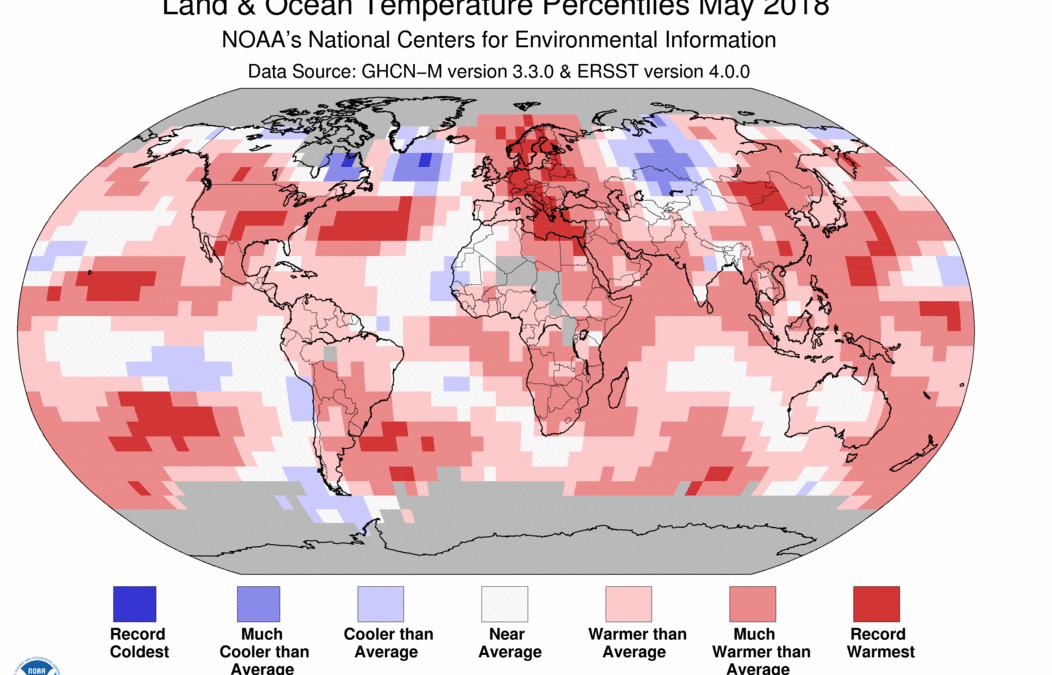SOURCE: FiveThirtyEight
DATE: July 19, 2018
SNIP: It’s only July, but it has already been a long, hot spring and summer. The contiguous U.S. endured the warmest May ever recorded, and in June, the average temperature was 1.7 degrees Celsius (3.0 degrees Fahrenheit) above the 20th century average. Iowa, New Mexico and Texas set record highs for their minimum temperatures in June, and as of July 3, nearly 30 percent of the Lower 48 was experiencing drought conditions. And it’s not just the U.S. During the first five months of 2018, nearly every continent experienced record warm temperatures, and May 2018 marked the 401st consecutive month in which temperatures exceeded the 20th century average.
Climate change, in other words, is not a hypothetical future event — it’s here. We’re living it. And at a major science conference this month, some of the world’s leading climate scientists said it was changing our world in ways beyond what they’d anticipated.
A draft of a forthcoming Intergovernmental Panel on Climate Change report that leaked earlier this year concludes that global temperatures are on track to rise in excess of 1.5 degrees Celsius above pre-industrial levels by about 2040. The 2015 Paris climate agreement set limiting global warming to 1.5 degrees Celsius as a sort of stretch goal, with the less ambitious target being 2 degrees Celsius. The IPCC report, which is expected to be released in October, says that even if the pledges made under the Paris agreement are fulfilled, warming will still exceed 1.5 degrees Celsius. The report also says that the differences between the present day and just 0.5 degrees more warming are “substantial increases in extremes,” including hot temperatures, “heavy precipitation events” and extreme droughts.

